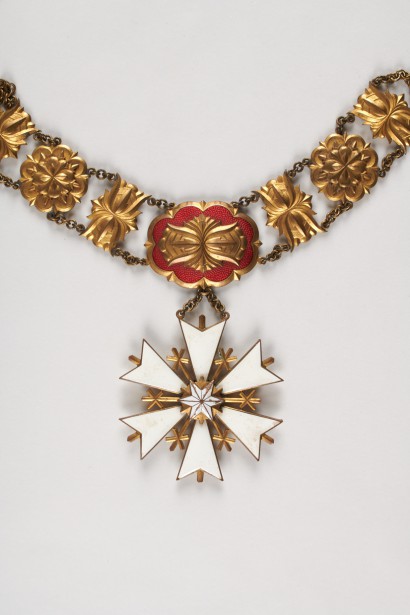

The orders of the Baltic states from the inter-war period, originating from the collections of an eminent Lithuanian collector Vilius Kavaliauskas, will be presented at an exhibition in the Officer Cadets School from 2 February to 15 August 2021.
The exhibition, which is aimed at outlining the history of the Baltic states and strengthening cooperation between Poland and those states, will feature around three hundred decorations from Lithuania, Latvia and Estonia from the years 1918–1940.
The inter-war period is an extremely interesting fragment of history of orders of the Baltic states, a time of creation of decoration systems designed not only to recognise merits but being also an attribute of independence and one of the elements of state policy.
Lithuania, Latvia, Estonia and Poland regained their independence in 1918. Soon, each of these states developed its own decoration system. Poland introduced two orders which had been created in the pre-partition period: The Order of White Eagle and the War Order of Virtuti Militari, whereas Lithuania, Latvia and Estonia created an entirely new system based on the experiences and history of their nations.
The first decorations in the Baltic states were awarded for merits in the struggle for independence. Among those decorated were also Poles who deserved to be recognised for the fight for the independence of Latvia. The independence of Poland, Latvia, Lithuania and Estonia was brought to an end by the Ribbentrop-Molotov Pact signed on 23 August 1939. Under a secret protocol, the Pact divided Poland between the Third Reich and USSR, and situated Lithuania in the area of influence of the Reich, and Latvia and Estonia in the Soviet zone.
Poland, occupied by both invaders, lost its independence but not statehood, as the Polish government and army existed in emigration and in the occupied Poland. In 1940, the fate of occupied Second Polish Republic was shared by the Baltic republics.
During World War II, the governments of the Baltic states continued to award decorations for the fight with the Soviets. The end of the war sanctioned the inclusion of those countries to the Soviet Union and put an end to their decoration system. It was only the struggle for independence in the years 1990–1991 which changed the map in this part of Europe – Lithuania, Latvia and Estonia reappeared on it. Their decoration systems were restored as an attribute of an independent state.
As Vilius Kavaliauskas emphasises, the Lithuanian order and medals, as well as the Latvian and Estonian ones, were not made of gold; their value was then not represented by the material of which they were made. These decorations were awarded to known persons with merits or those displaying courage. They were both the creators of the Baltic states in 1918, the defenders of sovereignty in the independence war, the builders of the economic potential, guardians of peace in Europe ravaged by war.
The exhibition "Symbols of Baltic Freedom" will be open to visitors from Tuesdays to Thursday between 10.00 and 16.00, and from Friday to Sunday between 10.00 and 18.00. Entry: PLN 10 – normal ticket, PLN 5 – reduced ticket, PLN 1 – children aged up to 7 years and youth up to 26 years of age, on Fridays – admission if free of charge. With one combined ticket to all the Museum buildings (PLN 40 – normal ticket, PLN 20 – reduced ticket, PLN 1 – children aged up to 7 years and youth up to 26 years of age). Only individual tours are possible. A maximum number of 5 persons can visit the exhibition at a time. Visits are also restricted in time: 20 minutes.
Exhibition partners: Ministry of Culture and National Heritage and Embassy of the Republic of Lithuania in Poland.